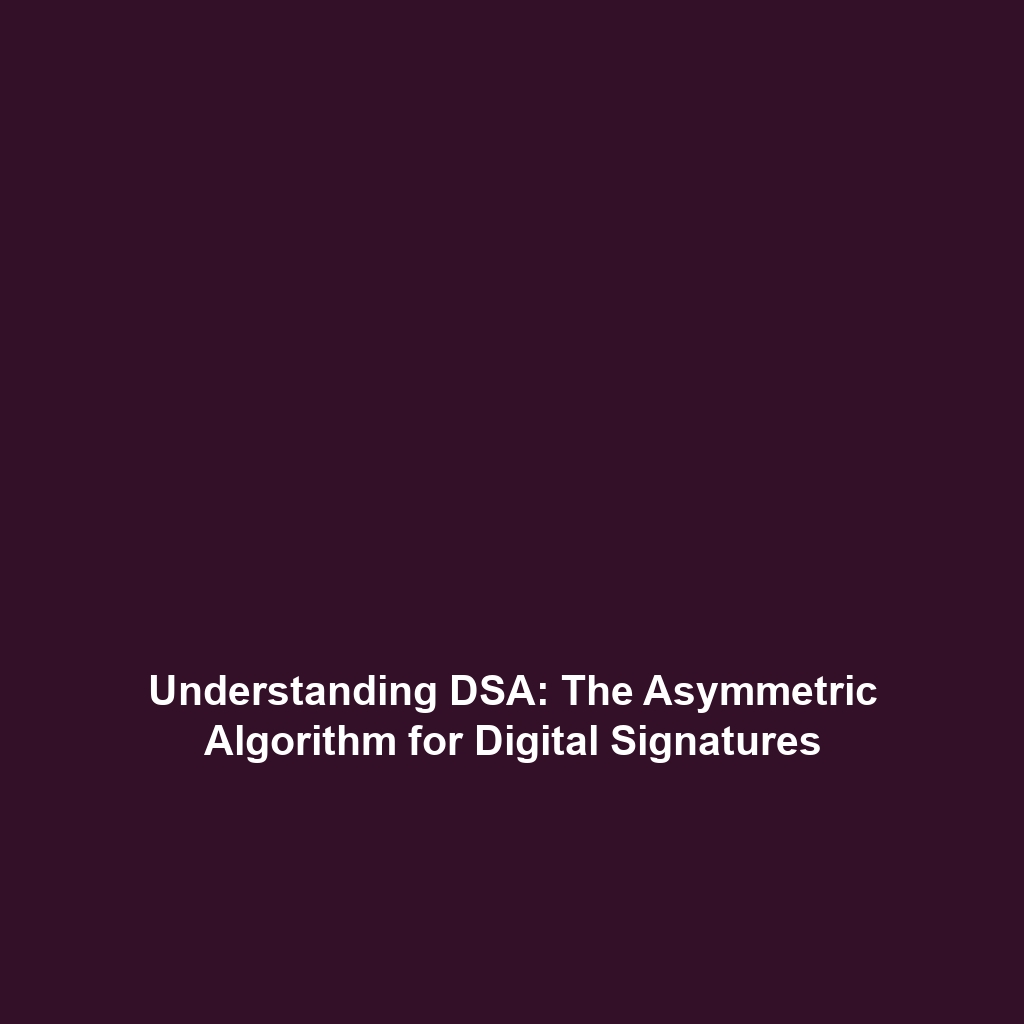Understanding DSA: The Digital Signature Algorithm in Cryptography
Introduction
The Digital Signature Algorithm (DSA) is an essential pillar in the field of cryptography, providing a method for creating secure and verifiable digital signatures. As an asymmetric algorithm, DSA plays a crucial role in ensuring the integrity and authenticity of digital messages and transactions. By leveraging complex mathematical principles, DSA enables users to sign electronic documents with a cryptographic signature that can be independently verified, bolstering trust in digital communications. This article explores the key concepts surrounding DSA, its applications, challenges, and future research directions in the realm of cryptography.
Key Concepts of DSA
Understanding DSA requires familiarity with several foundational principles:
1. Asymmetric Cryptography
DSA belongs to the broader category of asymmetric cryptography, which utilizes key pairs consisting of a public key and a private key. While the private key is kept secret, the public key can be freely distributed, allowing anyone to verify signatures without compromising security.
2. Signature Generation and Verification
The DSA involves two main processes: signature generation and signature verification. During signature generation, the sender creates a digital signature using their private key. The recipient can then verify the authenticity of the signature using the sender’s public key, ensuring that the message has not been altered.
3. Mathematical Foundations
DSA is built on modular arithmetic and mathematical concepts like the discrete logarithm problem, making it a secure choice for digital signatures in cryptography.
Applications and Real-World Uses
The applications of DSA in cryptography are extensive and impactful:
- Secure Email Communication: DSA is employed in email protocols to ensure the authenticity of messages.
- Document Signing: Many digital platforms leverage DSA to sign contracts and legal documents electronically.
- Software Distribution: DSA is used to verify the integrity of software updates and downloads, protecting against malicious tampering.
- Blockchain Technology: In blockchain networks, DSA helps in validating transactions and maintaining data integrity.
Current Challenges
While DSA is vital in the digital security landscape, it does face several challenges:
- Performance Issues: DSA can be slower compared to other signature schemes, impacting system performance.
- Key Management: Managing key pairs securely is critical; loss of the private key results in the inability to verify signatures.
- Resistance to Attacks: DSA must continually evolve to remain secure against emerging cryptographic attacks.
Future Research and Innovations
Research is ongoing to enhance DSA and address its limitations. Some promising directions include:
- Quantum Resistance: Developing variants of DSA that are resilient against quantum computing threats.
- Integration with Blockchain: Innovations focused on optimizing DSA for blockchain applications to increase efficiency and security.
- New Mathematical Techniques: Exploring novel mathematical frameworks to improve the speed and reliability of DSA signatures.
Conclusion
The Digital Signature Algorithm plays a crucial role in modern cryptography, providing an effective solution for secure digital signatures. Despite its challenges, ongoing innovations promise to enhance the algorithm’s security and applicability in various fields. For those interested in further exploring cryptography, check out our articles on Cryptography Overview and Asymmetric Cryptography Techniques.
